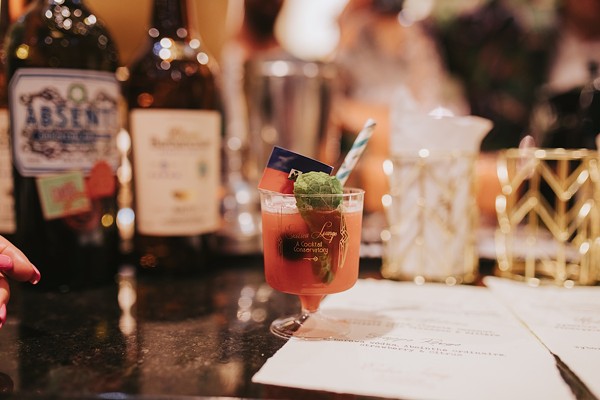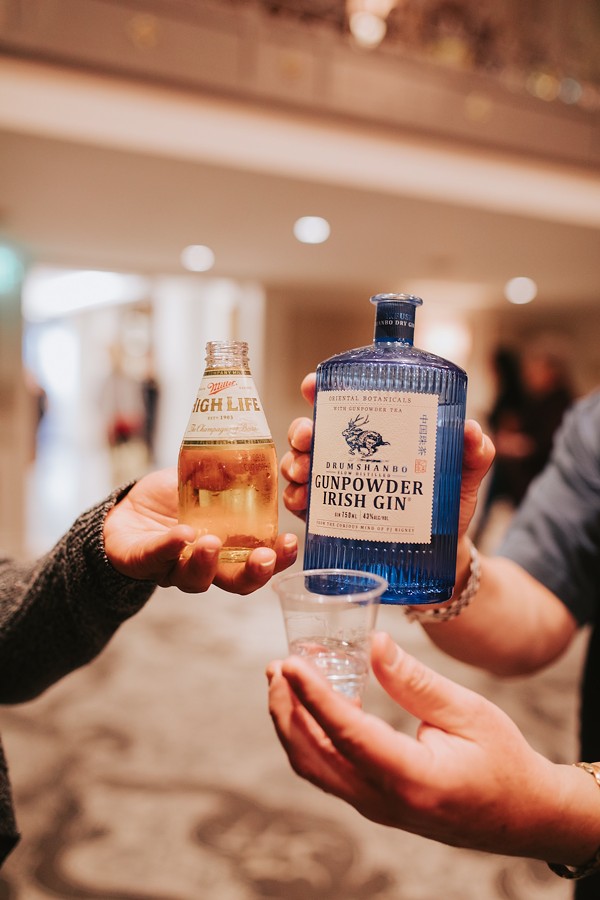The San Antonio Cocktail Conference and the late Sasha Petraske — a groundbreaking New York mixologist who was a fixture at the event — have helped make San Antonio a stage for new talent, spirits and techniques.
Over its eight-year history, the conference allowed us to taste countless new beverages and connect with bartenders, brand reps and mixologists to learn about the best cocktail experiences. Drawing on this year’s event, which ran January 13–20, here are the five cocktail trends to look for in 2019:
1. Coffee + Cocktails
Coffee in cocktails is nothing new, but coffee roasters and houses are increasingly offering quality cocktails made with craft coffee. Pulp Coffee, the official coffee purveyor for SACC, has seen a spike in demand for coffee cocktails and beverages in San Antonio since opening in 2015.
“We’re about five years behind [other major markets], but I think we’ll be seeing a lot more cold brew coffees mixed with cocktails than anything else that is served hot,” Pulp founder James Mireles said.
2. Gin Is In
A new wave of gin hit the global market in 2018, and we enjoyed learning about both emerging and classic brands during the conference. Keep an eye out for labels like Gunpowder Irish Gin — made with globally-inspired botanicals like cardamom and juniper berries as well as botanical vapors like Chinese green tea and Kaffir lime. Combined, those additions produce a bold, flavorful spirit with a floral nose and a bite.
ROXOR, a Texas artisan gin from James Beard Award-winning chef Robert Del Grande and Donald Short, former International CEO for Coca-Cola, benefits from the founders’ knowledge of plants and culinary expertise for a smooth and affordable bottle.
“We don’t think of spirits as the healthiest thing, but using plants — fresh grapefruit and lime zest and Texas notes like the pecan — creates a well-balanced gin for classic cocktails or on the rocks,” Short said. “I think people really appreciate the botanicals and the waves of flavor that rearrange themselves in an interesting way as the ice melts.”
3. Alternative Agave Spirits
The demand for agave-based spirits spiked between 2017 and 2018, which flooded the market with mezcal and tequila and also forced producers to discuss long-term sustainability. Expect to see more spirited agave alternatives like sotol and racilla — both sustainable plants with a similar smoky character — in 2019.
“People like to experience things that are new, but they want things that are authentic and speak to the land. [Sotol] is an alcoholic beverage that you can make from [plants] that you can find right here in Texas,” said Cortney Hickey, marketing manager for Desert Door Sotol. “Sotol was one of the first alcoholic beverages in Texas, and we know that it was first consumed by indigenous tribes. We’re the first brand to [wild harvest] crops in the U.S., but we know there are more coming.”
4. Sustainability
People got really upset about straws in 2018, and their anger reflected a bigger shift in the industry’s sustainability culture. More distilleries and breweries are growing their own plants, more bartenders are utilizing their available work and health resources — and avoiding professional burnout — and a growing number of consumers are learning about the spirit-making process, from plant to bottle. The Cocktail Conference highlighted sustainability this year with seminars focused on reducing waste behind the bar, events celebrating the processes behind spirits and information on how the industry can grow and improve.
5. New Sensory Experiences
From the cheese-and-spirit tastings with Macallan Scotch whisky to a seemingly endless number of bar pop-ups that took place in 2018 and during the conference — including tiki cocktails from Chicago’s Three Dots and a Dash during the bar takeover at Hot Joy — consumers got the opportunity to try new flavor and texture combos while enjoying unique ambiance. We enjoyed seeing glowing drinks, matcha in our glasses, new company and bottle designs. We also heard brands discuss the future of CBD-infused cocktails during the conference, even though we may have to wait a little longer (2020 anyone?) to see those in San Antonio.
* Correction: A previous version of the story stated that Desert Door was the first brand to grow crops in the U.S.; they were the first to wild harvest native plants in the states.
So many restaurants, so little time. Find out the latest San Antonio dining news with our Flavor Friday Newsletter.



